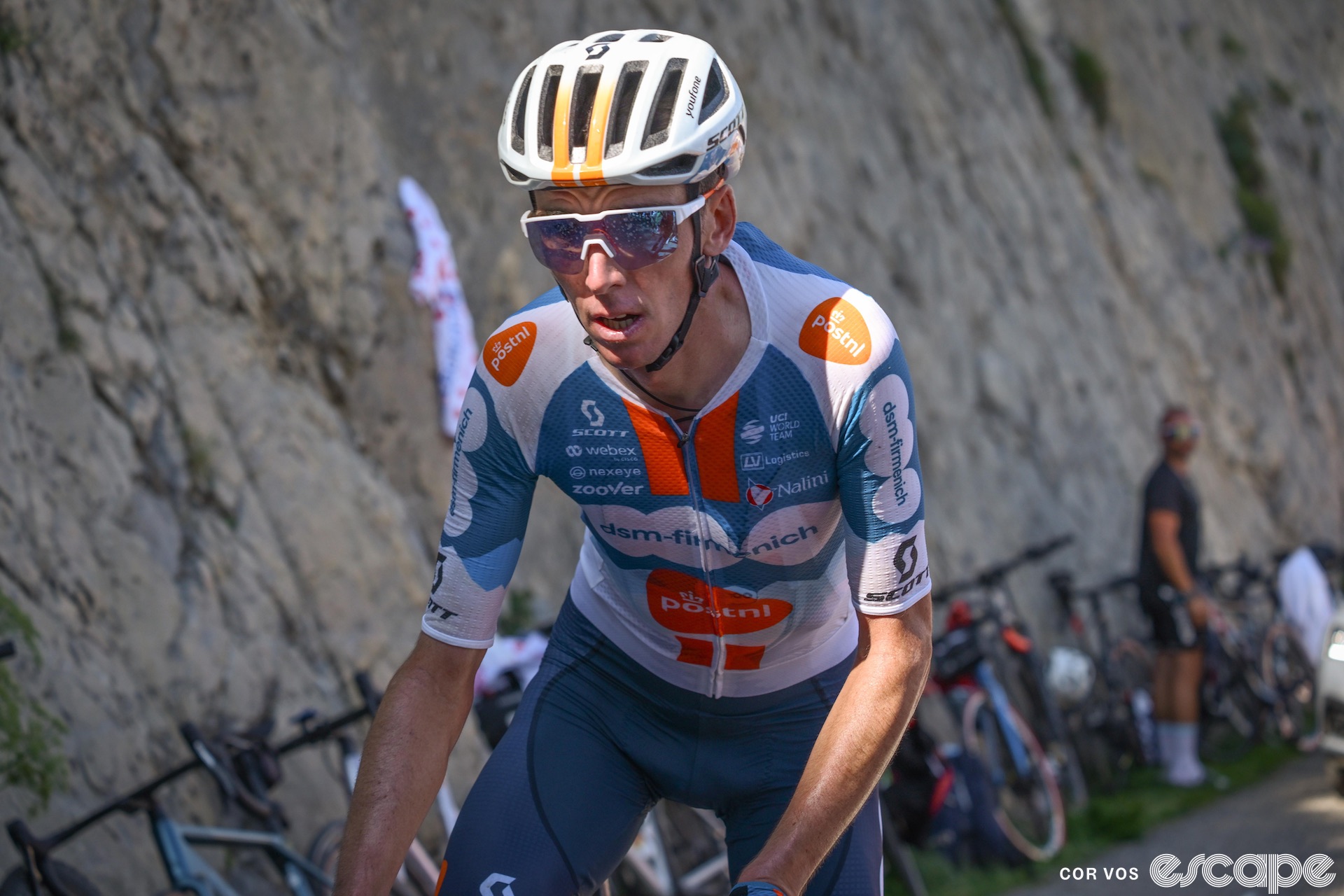Months after Escape Collective's exclusive reporting broke news of the use of carbon monoxide (CO) in pro cycling as a diagnostic tool to optimize altitude training and its troubling potential for direct performance enhancement, the cycling world is increasingly taking note of the technique, with discussions on its use and how to respond.
The Mouvement Pour un Cyclisme Crédible (MPCC) – a coalition of teams operating committed to anti-doping and voluntarily operating under more stringent restrictions than required by WADA and the UCI – released a statement following its October 28 annual general meeting advocating for specific rules relating to the use of carbon monoxide, including a potential ban (ketones were also a major topic of discussion).
"With the health risk (potentially fatal), the complex and artificial technical aspect (misuse of technical and therapeutic means to artificially create physiological changes), and the world anti-doping code in force, the MPCC can only and strongly advise against the use of this technique… until it’s banned," the organization said. At present, the UCI and WADA have yet to make any substantial rule adjustments to place guardrails on CO use.
WADA's Prohibited List has a broad ban on methods for "artificially enhancing the uptake, transport, or delivery of oxygen," but CO's dual-use profile – which can be used to track changes in hemoglobin mass (Hbmass) in response to training interventions, or more aggressively to increase Hbmass directly – and the difficulty of detection creates significant challenges for governing bodies to overcome.
In other words, the cycling world is dealing with a fair bit of uncertainty around the legality, let alone the ethics, of carbon monoxide use.
Veteran pro Romain Bardet (DSM Firmenich-PostNL) offered some interesting perspective on the subject in an interview with Eurosport earlier this month (DSM Firmenich is an MPCC member). The 34-year-old Frenchman, who is retiring next June, opined that carbon monoxide could already be enhancing the performance of unnamed riders in the sport.
Bardet had offered his take on the growing disparity of team firepower in the pro peloton, saying, "We are heading towards a cycling where competitive interest is greatly reduced," and then he was asked about carbon monoxide. Bardet told Eurosport that although he had not seen it happen, "there will always be the desire to seek competitive advantages," and that he "would not be surprised" if the technique were in use.
Neither the question nor Bardet's answer specified if he was speaking about using CO for diagnostics or for direct performance enhancement, but according to Bardet, "Carbon monoxide can explain the trajectory of some people we didn't know about a year, a year and a half ago, but it's also a bit easy to say that without looking at their trajectory. These processes are documented and it's now up to the authorities to decide whether to ban them or not, to carry out checks."
As Bardet pointed out, in the absence of any hard and fast rules legislating the use of carbon monoxide, "it is the intimate conviction of each person to place the threshold of what seems ethical, fair in the absolute and desperate search for the final result in relation to their values."
"It's like ketones, like so many things, it's open to interpretation," he said. "And unfortunately, since the rules are not clearly laid down, since this interpretation is left to the discretion of each individual and since we're in an ultra-competitive sport where only victory counts, we shouldn't be surprised by possible deviations."
In other words, Bardet has his doubts about whether all of his colleagues in professional sport are motivated to act ethically at all times.
"In such a competitive world with so much at stake economically, it is totally pointless to believe that it is the goodwill and irreproachable ethics of the riders and teams that will allow a healthy regulation of the environment," he said. "It is totally illusory."
Carsten Lundby, the CEO Of Detalo Health, which produces the carbon monoxide rebreathers already in use by several teams as diagnostic training aids, told Cyclingnews after the MPCC statement that he agrees with banning the use of carbon monoxide as a performance enhancer, while reaffirming his position that the two applications for the substance should be legislated separately.
"The use of carbon monoxide as a medical diagnostic tool is, of course, an entirely different thing where the intent is not to increase performance, but as a diagnostic tool," he said. "And that should, of course, not be forbidden, or cannot be forbidden. So there needs to be a clear distinct treatment between the two."
How, when or whether the relevant governing bodies (WADA and the UCI) address carbon monoxide is yet to be seen, though it may be increasingly difficult for those organizations or anyone else in the sport to leave the subject unaddressed as it continues to make headlines.
Did we do a good job with this story?


